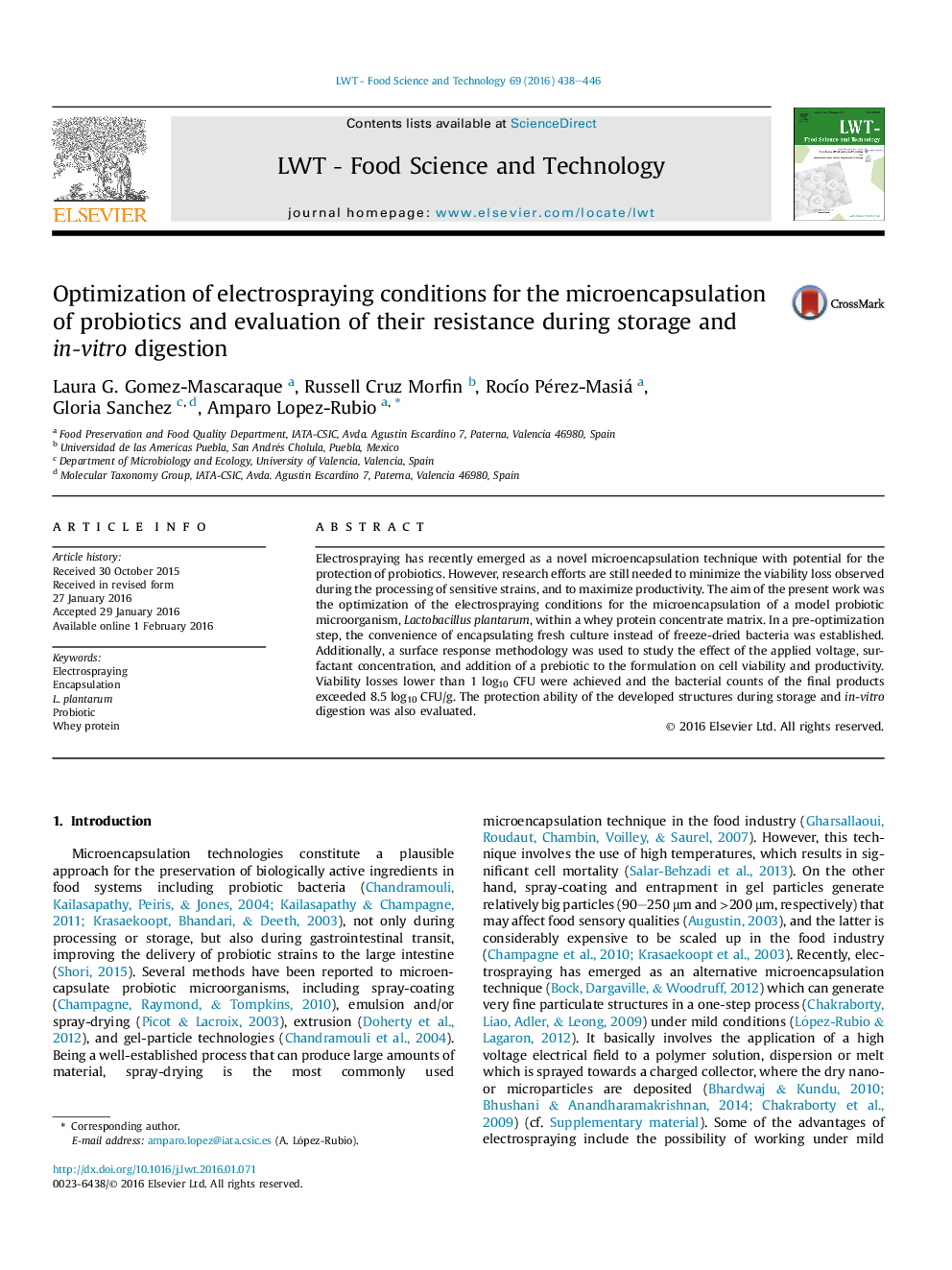| Article ID | Journal | Published Year | Pages | File Type |
|---|---|---|---|---|
| 4563767 | LWT - Food Science and Technology | 2016 | 9 Pages |
•L. plantarum was successfully encapsulated by electrospraying.•Product yield increased with the voltage, surfactant and prebiotic concentrations.•Low viability losses and high product yields were obtained after optimization.•Enhanced protection during storage at high relative humidity was observed.•Electrospraying showed similar protection during digestion as freeze-drying.
Electrospraying has recently emerged as a novel microencapsulation technique with potential for the protection of probiotics. However, research efforts are still needed to minimize the viability loss observed during the processing of sensitive strains, and to maximize productivity. The aim of the present work was the optimization of the electrospraying conditions for the microencapsulation of a model probiotic microorganism, Lactobacillus plantarum, within a whey protein concentrate matrix. In a pre-optimization step, the convenience of encapsulating fresh culture instead of freeze-dried bacteria was established. Additionally, a surface response methodology was used to study the effect of the applied voltage, surfactant concentration, and addition of a prebiotic to the formulation on cell viability and productivity. Viability losses lower than 1 log10 CFU were achieved and the bacterial counts of the final products exceeded 8.5 log10 CFU/g. The protection ability of the developed structures during storage and in-vitro digestion was also evaluated.
